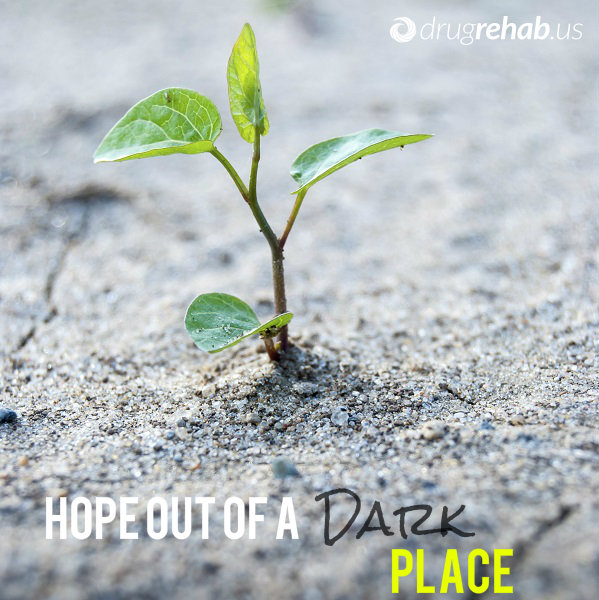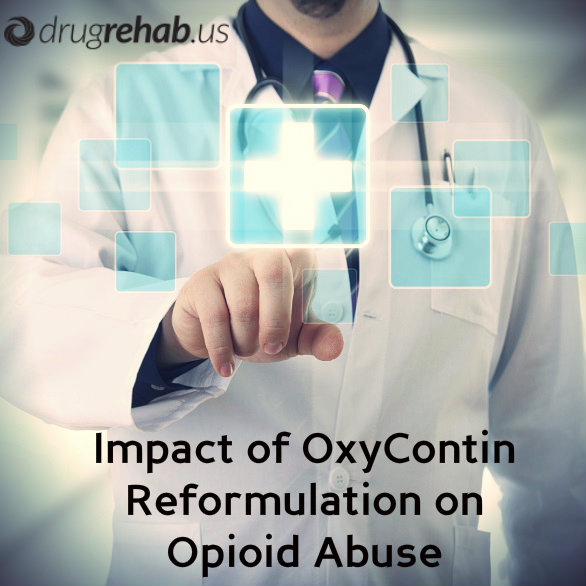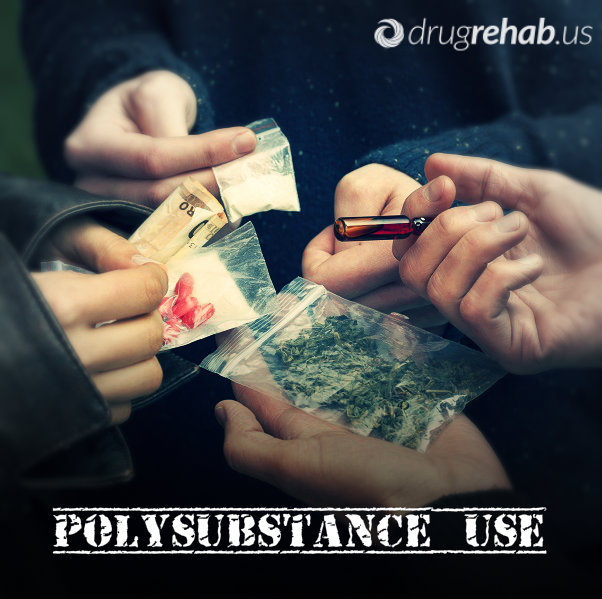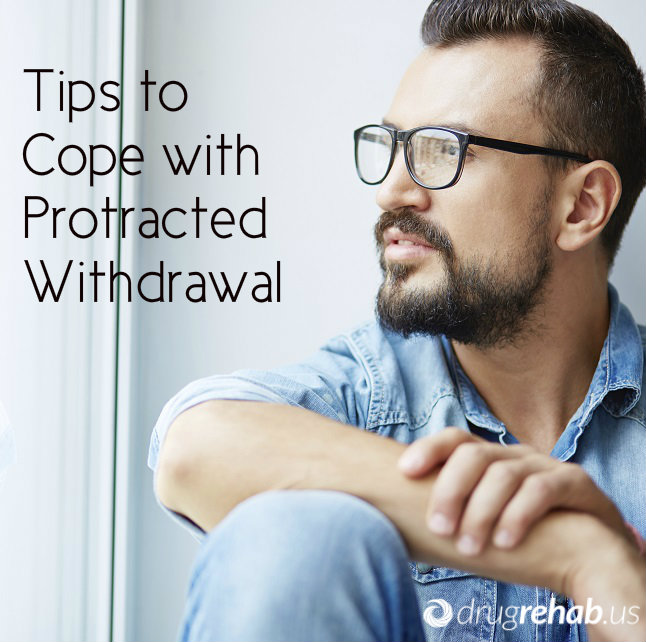A new study has investigated the widespread use of cell phones and smartphones in the U.S., leading many experts to suggest taking some time out of each day to disconnect in order to protect against the potentially addictive effects of technology use. The findings may be a little basic—focusing about as much on connection problems and telemarketing as potential markers of addiction—but they still serves as a wakeup call to the impact cell phones may be having on both American youth and adults.
So does the risk of Internet and technology addiction mean you might need to disconnect? The evidence seems to say so, but precisely defining these addictions is harder than it might seem.
Cell Phone Use And Time Staring At Screens
 The most basic finding from the research is that 90 percent of American adults have a cell phone, and 58 percent have a smartphone. In addition to many more mundane findings, the results strongly hint at a problem with excessive smartphone use.
The most basic finding from the research is that 90 percent of American adults have a cell phone, and 58 percent have a smartphone. In addition to many more mundane findings, the results strongly hint at a problem with excessive smartphone use.
In particular, the survey revealed that 44 percent of cell phone owners have slept with their phones next to their beds so that they wouldn’t miss calls, texts or other updates through the night. Over two-thirds of cell phone owners check for messages or updates even if their phones don’t ring, sound a tone or vibrate, and about three in 10 say they couldn’t imagine living without their phones.
Americans spend an average of seven hours and 24 minutes staring at screens each day, and for 8- to 10-year-old children, the average is eight hours. Teens spend the most time looking at screens on average, reaching a huge 11 hours per day.
An Overstimulated State
The increasing use of cell phones has many direct impacts, relating to both being connected and spending so much time looking at screens. Constant checking of your cell phone can make it harder to fall asleep, keeping your brain in an anxious, overstimulated state. This same effect occurs when messages you send aren’t responded to quickly—you find yourself checking your phone and possibly worrying that your message didn’t come across as intended. Research suggests that staring at screens makes people less creative and less productive.
There are also more obvious consequences of excessive cell phone use, in particular spending less time socializing with people in real life or engaging in hobbies. Even when people do socialize, it’s becoming increasingly common for a group of people to sit staring at their screens while ignoring the people around them.
Technology And Internet Use As Addictions
Internet addiction has yet to be officially acknowledged as a condition by the Diagnostic and Statistical Manual of Mental Disorders (the DSM), but most experts—who are seeing increasing numbers of people seeking help for technology and Internet addictions—accept its existence. It might seem counterintuitive that an addiction can persist without a substance, but addiction really comes down to the effect something has on the brain, and other behavioral addictions such as gambling addiction have gained widespread acceptance because of these addiction-like effects on the brain.
Looking at the definition of addiction in a broad sense also reveals the striking similarities with excessive Internet and technology use. Addictions of any kind are characterized by an inability to control how often you engage in an activity, feeling urges or cravings to engage in the activity and continuing with it despite negative consequences.
Internet and technology addicts run into problems with work and school when they’re unable to stop surfing the Internet or using their devices. They may also jeopardize relationships and suffer withdrawal-like symptoms when they’re disconnected.
The similarities are hard to deny, but there are still some problems with classifying technology or Internet use as an addiction. First, the Internet (and technology used to access it) often serves as a method to access other addictive media, like pornography, online casinos or video games, so it’s hard to pin down whether somebody is addicted to the Internet or something else that’s accessed online. Additionally, it’s difficult to define just how much use is too much.
These problems are more technical than anything, however. Real-world examples of people ruining their lives over excessive Internet or technology use and being unable to stop speak volumes about the problem. Clearly, something unusual is going on.
Disconnecting To Protect Against The Risk
Internet and technology addiction are almost certainly real conditions, and we need to take the risks seriously because the vast majority of Americans now use Internet-equipped devices. Although full-blown technology or Internet addiction won’t affect most of us (like most addictions won’t), taking steps to guard against overuse is a prudent move. Many experts recommend simply disconnecting for an hour each day, preferably before bed, but doing so any time throughout the day is beneficial. There are apps designed to help you limit the time you spend on your smartphone.
There are many similar approaches available that are suitable for less severe cases, and many more professional counseling or rehab programs if you’re struggling with a more serious addiction. As we continue to spend more and more time online, thinking about the extent of our use and its consequences is becoming increasingly important.
Read Our Other Intriguing Posts On Internet Addiction
Prior to 2013, doctors in the U.S. diagnosed serious gambling problems under the heading of a condition called pathological gambling. However, in May of that year, the American Psychiatric Association eliminated the pathological gambling diagnosis and replaced it with a new, modified diagnosis called gambling disorder.
In a study published in 2014 in the journal Psychology of Addictive Behaviors, a team of American researchers compared the accuracy of the definition for pathological gambling to the accuracy of the definition for gambling disorder. These researchers concluded that the definition for the newer diagnosis has retained a high degree of accuracy in properly identifying affected individuals.
Pathological Gambling
The American Psychiatric Association (APA) included pathological gambling with a larger group of conditions called “impulse control disorders not elsewhere classified.” Other illnesses found in this category included pyromania, an anger control-related condition called intermittent explosive disorder, and kleptomania.
Pathological Gambling Symptoms
Doctors diagnosing pathological gambling looked for the presence of a minimum of five out of 10 potential symptoms. These symptoms included:
 fixation with gambling while not actively involved in gambling,
fixation with gambling while not actively involved in gambling,- demonstrated inability to place limits on gambling participation,
- compulsion to engage in increasingly risky gambling situations, a
- reliance on gambling to cope with or avoid painful emotions or personal problems,
- returning to gambling rapidly after incurring substantial losses,
- concealing the extent of gambling involvement from others,
- relying on other people’s resources for gambling participation,
- gambling-related exposure to serious harm in personal or social relationships, and
- the onset of mental/psychological withdrawal when gambling participation stops or declines
The pathological gambling definition also included funding of gambling through illegal means as a potential symptom.
Gambling Disorder
In 2013, the APA simultaneously eliminated the pathological gambling diagnosis and placed the gambling disorder diagnosis in a new category of conditions called addictive disorders. These disorders are behavioral addictions that stem from problematic involvement in certain pleasurable, everyday activities rather than from the repeated, excessive use of drugs or alcohol. Gambling disorder is the only illness the APA has added to the addictive disorders category.
The definition for this condition largely resembles the previously used definition for pathological gambling. However, the American Psychiatric Association eliminated funding gambling through illegal means from the list of symptoms. In addition, the organization reduced the lower limit for diagnosing gambling disorder to four out of 10 symptoms, compared to the five out 11 symptoms limit used for diagnosing pathological gambling.
Has The Change Affected Accuracy?
In the study published in Psychology of Addictive Behaviors, researchers from the New York State Psychiatric Institute, the National Institutes of Health, and the University of Connecticut used information from a large-scale federal project called the National Epidemiologic Survey of Alcohol and Related Disorders (NESARC) to compare the accuracy of the symptom set used to define pathological gambling to the accuracy of the symptom set used to define gambling disorder. A total of 43,093 people were involved in this comparison. These individuals came from demographic backgrounds reflective of the national population. The researchers analyzed the gambling problems in this group as a whole and in each major demographic subgroup.
After completing their analysis, the researchers concluded that the new gambling disorder definition correctly identifies serious gambling problems in roughly 99 percent of those individuals who would have been diagnosed under the old pathological gambling definition. They also concluded that both definitions do an equally good job of identifying people not affected by serious gambling problems. These findings applied to the NESARC participants as a whole, as well as to all of the demographic subgroups found among the NESARC participants.
The study’s authors concluded that the switch from pathological gambling to gambling disorder and the associated elimination of funding gambling through illegal means as a potential symptom have had a minimal effect on doctors’ ability to accurately diagnose dysfunctional gambling behaviors. However, they also concluded that the lowered symptom requirement for gambling disorder will lead to an uptick in the number of people who receive a diagnosis. Still, despite this uptick, the overall number of people affected by diagnosable gambling problems will continue to be fairly small relative to the total population.
Prescription drug abuse is responsible for over half of all drug overdose deaths in the U.S., and more people die from drug overdoses than gunshot wounds or motor vehicle accidents. The extent of the issue can’t be overstated, and this is why legislators, researchers and treatment providers are going to such lengths to tackle the growing problem.
In May 2014, the FDA approved a medication that can be used by anybody—even without medical training—to counteract opioid overdose, and other recently approved medications also offer promise for reducing the number of lives lost to prescription drug abuse. However, as with similar approaches, the psychological elements of addiction still need to be addressed in order to truly tackle the problems gripping the nation.
The Prescription Drug Abuse Epidemic
Prescription drug abuse is largely driven by the erroneous idea that prescription drugs are somehow “safe” because they’re prescribed by doctors. The problem is that many prescription drugs are addictive and only safe when used as suggested by physicians. As addiction develops, users are increasingly less likely to heed the suggested dosage advice, instead taking more and more of the substance to satisfy their growing cravings.
The majority of prescription drug abuse involves opioid medicines (substances with the same overall effects as heroin), but due to how widespread their abuse is, approximately five times as many people die from overdose on prescription opioids every year than from heroin overdose. Even combining heroin and cocaine overdose deaths doesn’t approach the number of deaths caused by prescription opioid overdose. Stopping these deaths is a huge priority for public health.
New Medications Offering Hope For Stopping Prescription Drug Overdoses
Evzio – The Opioid Overdose Reversal Shot
 Evzio is an approved opioid overdose treatment, offering a single dose of naloxone hydrochloride and coming in a hand-held, auto-injection format. Naloxone is an opioid antagonist, meaning that it counteracts the effects of opioid drugs and can be used to quickly reverse the effects of overdose.
Evzio is an approved opioid overdose treatment, offering a single dose of naloxone hydrochloride and coming in a hand-held, auto-injection format. Naloxone is an opioid antagonist, meaning that it counteracts the effects of opioid drugs and can be used to quickly reverse the effects of overdose.
The drug has been used in emergency treatment of overdose for some time, but the benefit of the new formulation of the medication is that it doesn’t require a trained physician or medical professional to administer, meaning that a single shot could be kept in homes for use in emergencies.
The approach isn’t perfect—after all, the true problem is what caused the individual to take a dangerously high dose in the first place—but there is no doubt that quicker access to corrective medications could reduce the numbers of deaths.
Naltrexone Implants – Reducing Cravings And Stopping Addiction?
Naltrexone is an opioid receptor antagonist, which means that it effectively “blocks” the parts of the brain opioid drugs use to create their effects and thereby reduces cravings. The medicine has been used for some time for both heroin and alcohol addiction, but by giving the drug in implant form, it could potentially be more effective for curbing addiction.
BioCorRx uses the medicine alongside counseling in its Start Fresh Program, and the implant (inserted into the lower abdomen) gradually releases doses for a period of six months. According to the treatment provider, the approach is so effective that 85 percent of patients who go through all 15 sessions within six months quit abusing dugs, and some report that cravings disappear within just a few hours of having the implant inserted.
However, it’s worth noting that clinical trials haven’t been conducted on the program, so the very high success rate is likely an overestimation.
The Importance Of Psychological Treatment For Addiction
The new approaches to reducing the deaths from prescription opioid abuse are definitely promising, but Evzio in particular misses an important element of treatment for addiction. Having the overdose-counteracting shot in the homes of those at risk is obviously beneficial and will reduce the amount of needless deaths, but the underlying problem is effectively unaddressed.
Without psychological treatment to get to the bottom of what causes the individual to abuse prescription medications in the first place, the same (internal or external) pressures will undoubtedly crop up again after a near-overdose event, and without the psychological tools to deal with these pressures in a healthy way, more drug abuse is likely to result. It’s good to reduce the amount of fatalities from prescription drug abuse, but if we’re to make a substantial dent in the numbers, it is the addiction that needs to be addressed, not just the physical risk.
The BioCorRx program is promising because it does provide psychological treatment in addition to medication to help control cravings, although there are undoubtedly exaggerations with regards to the program’s success rate. However, by providing 15 counseling sessions, the program is able to offer goal-focused support to addicts, and help them take decisive steps toward lasting sobriety.
Understanding The Roots Of Addiction To Successfully Overcome It
New medications for tackling prescription opioid abuse have their uses, and anything with the power to reduce the deaths from opiate abuse should be wholeheartedly supported, but it’s essential to remember that addiction isn’t solely a physical issue.
In addition to raising awareness of prescription drug abuse itself, people need to recognize that the true roots of addiction are psychological, and it can’t be fixed with a simple pill, injection or implant. Overcoming addiction takes dedication. There are no short cuts.
There Is Hope However, Out Of That Dark Place To A Place With Light!
Most people recovering from an addiction to an opioid drug or medication will experience a relapse fairly early in the treatment process. Two key factors in the onset of a relapse are the presence of continuing cravings or urges for opioid use and the onset of withdrawal symptoms after initial opioid detoxification.
In a study slated for publication in February 2015 in the journal Addictive Behaviors, a team of American researchers looked at the ways in which cravings and withdrawal symptoms impact the relapse risks for any given person recovering from prescription opioid addiction.
Opioid Cravings
All people dealing with opioid drug or medication addiction have longstanding chemical changes in their brain function that make them physically dependent on the continued intake of some form of opioid substance.
 Opioid cravings are essentially unconscious and conscious signals sent by the brain as a reminder of the established need to maintain at least a minimum level of opioid intake. Conscious cravings may manifest as clearly articulated thoughts supporting immediate opioid consumption or opioid consumption in the near future.
Opioid cravings are essentially unconscious and conscious signals sent by the brain as a reminder of the established need to maintain at least a minimum level of opioid intake. Conscious cravings may manifest as clearly articulated thoughts supporting immediate opioid consumption or opioid consumption in the near future.
Conversely, unconscious cravings may manifest as unarticulated urges for opioid intake. Conscious and unconscious cravings for the use of opioids or any other substance commonly stem from exposure to drug cues.
These cues are reminders of the actions commonly undertaken during episodes of substance use, the thoughts or feelings associated with substance use or the circumstances in which substance use typically occurs.
A strong drug cue can support a rapid escalation of drug cravings, and thereby steeply boost the short-term odds of drug use. The presence of opioid cravings is a diagnosable symptom of opioid use disorder (opioid abuse/addiction).
Opioid Withdrawal
Withdrawal is a second reinforcer used by the dependent/addicted brain to ensure the continued consumption of any given substance. It occurs when the levels of that substance fall below the levels required by the currently established conditions of addiction.
Opioid Withdrawal Symptoms
Specific symptoms of opioid withdrawal include:
- sleeplessness
- achy muscles
- an unusually anxious or agitated mental state
- excessive sweat production
- nausea
- vomiting
- pupil dilation
- diarrhea
- cramping in the stomach or abdomen
Unlike some forms of withdrawal (e.g., alcohol withdrawal), opioid withdrawal has no potential to trigger fatal changes in body function. However, affected individuals commonly feel uncomfortable enough to resume opioid intake. Withdrawal symptoms are usually most prominent during initial opioid detoxification. Along with opioid cravings and a range of other symptoms, doctors use the presence of withdrawal symptoms to help diagnose the presence of opioid use disorder.
Impact On Opioid Relapse Rates statistics
In the study scheduled for publication in Addictive Behaviors, researchers from the University of Texas Medical School at Houston, the University of Texas Health Science Center, the University of Texas Southwestern Medical Center and Harvard-affiliated McLean Hospital used information from a project called the Prescription Opioid Addiction Treatment Study to help determine exactly how opioid cravings and opioid withdrawal work together to increase the odds that any given person in recovery will relapse back into uncontrolled opioid use.
A total of 653 people dependent on or addicted to opioid medications took part in the study. All of these people received a commonly used medication, called buprenorphine/naloxone, that’s specifically designed to reduce the risks for relapse in people affected by opioid addiction.
The researchers concluded that there were four distinct groups of people in the larger pool of study participants: people with high levels of opioid craving and opioid withdrawal, people with moderate or intermediate levels of opioid craving and opioid withdrawal, people who transitioned from high levels of craving and withdrawal to low levels of craving and withdrawal, and people who maintained low levels of craving and withdrawal.
The researchers also concluded that three groups of participants were least likely to relapse back into uncontrolled opioid use: people who experienced a reduction in their craving and withdrawal levels over time, people who initially experienced low levels of craving and withdrawal, and people who responded well to the craving- and withdrawal-reducing effects of buprenorphine/naloxone.
The study’s authors believe that their work increases the level of understanding about those individuals most likely to rapidly relapse after entering treatment for prescription opioid dependence/addiction. They also believe that their work underscores the importance of paying close attention to changing craving and withdrawal symptoms during the recovery process.
Finally, the authors believe their work may increase the future ability to identify individualized treatment patterns that decrease each affected person’s chances of experiencing an early opioid relapse.
OxyContin is the brand name of an extended-release painkilling medication that contains the opioid narcotic substance called oxycodone. In its original form, this medication was easy to tamper with and use as a source of opioid abuse. In response to this situation, the manufacturers of OxyContin reformulated the medication and made it considerably more tamper-resistant.
In a study published in June 2014 in the journal Drug and Alcohol Dependence, a team of U.S. researchers investigated whether the reformulation of OxyContin has had the desired effect of reducing the number of people who use the medication in a pattern of opioid abuse.
Oxycodone And OxyContin
Oxycodone is a generic opioid medication noted for its usefulness in the relief of various forms of serious or severe pain. Like all other opioid drugs and medications, it can trigger diagnosable problems with abuse or addiction when used in ways not sanctioned and monitored by a doctor. Some branded medications contain oxycodone in combination with other, less-powerful painkilling substances such as acetaminophen, aspirin or ibuprofen.
 Common examples of these combined medications include Percocet, Endocet, Percodan, Combunox and Roxicet. Other branded medications contain only oxycodone as their active ingredient. In addition to OxyContin, examples of these medications include Oxecta and Roxicodone.
Common examples of these combined medications include Percocet, Endocet, Percodan, Combunox and Roxicet. Other branded medications contain only oxycodone as their active ingredient. In addition to OxyContin, examples of these medications include Oxecta and Roxicodone.
OxyContin arrived on the U.S. market in 1995. It is specifically designed to provide extended amounts of pain relief to people affected by ongoing moderate or severe pain. Since it must produce its effects for many hours, an OxyContin tablet contains more oxycodone than most other available medications.
Unfortunately, in its original form, the medication was highly susceptible to crushing, chewing, dissolving and other forms of manipulation that made its oxycodone content available all at once. This fact made OxyContin a prominent target for abuse by people seeking the recreational drug effects of opioid intake. Widespread availability of the medication also contributed to its prominent role in opioid abuse in the U.S.
OxyContin Medication Reformulation
Along with addiction specialists, public health officials and drug enforcement officials, the manufacturers of OxyContin (Purdue Pharma LP) became well aware of the role that abuse of the medication played in the larger phenomenon of prescription opioid abuse.
In response, they withdrew the original formulation of OxyContin from the market and, in August 2010, released a new version of the medication that is substantially harder to use as a source of abuse. Specific steps taken during this reformulation include minimizing the availability of oxycodone even after crushing or other manipulation occurs, as well as making it impossible to pass a dissolved form of the medication through a syringe for injection.
Impact Of OxyContin Reformulation On Opioid Abuse
In the study published in Drug and Alcohol Dependence, researchers from the University of Kentucky and Purdue Pharma used interviews with a group of 189 adults with a prior history of abusing OxyContin to assess the effectiveness of the new formulation of the medication in discouraging opioid abuse. During these interviews, each participant was asked to compare their monthly level of involvement in opioid abuse before the OxyContin reformulation to their monthly level of involvement after the reformulation.
After analyzing the results of the interviews, the researchers found that 33 percent of the participants had tried to abuse the reformulated version of OxyContin in the month before the study. This contrasted with a 74 percent rate of monthly OxyContin abuse prior to the reformulation, as well as with a 96 percent rate of monthly abuse for any form of immediate-release oxycodone.
Individual rates for snorting and injecting the reformulated medication were also substantially lower than the snorting and injection rates associated with both the old version of OxyContin and oxycodone products that release immediately into the bloodstream. Overall, the study participants tried to abuse the reformulated OxyContin on roughly two out of 30 days. In contrast, abuse of the original version of the medication took place approximately 13 days a month, while abuse of immediate-release oxycodone took place about 20 days a month.
The researchers note that abuse of the old version of OxyContin among the study participants became much less common after the new version of the medication reached the market. In addition, they note that the participants rarely shifted from oxycodone abuse to heroin use. All told, they concluded that, at least among the people who took part in the study, the new version of OxyContin does not play the same prominent role in opioid abuse as the original version of the medication first released in the 1990s.
Do You Or Someone You Know Need Help With Prescription Drug Addiction?
Call Us Now! Help is Available 24/7!
Marijuana is the most popular illicit/illegal drug in the U.S. among both younger and older people. In some cases, people who consume marijuana may also be active participants in other forms of drug use.
In a study published in September 2014 in the Journal of Addictive Diseases, a team of American researchers explored the connection between marijuana use and the intake of other drugs among young people transitioning from adolescence into early adulthood. These researchers concluded that daily consumers of marijuana in this age range are statistically more likely to also use additional drugs.
Stats On Marijuana, Older Teens And Young Adults
 Approximately 19 million Americans over the age of 11 consume at least some amount of marijuana in a typical month, according to 2012 figures compiled through a federal project called the National Survey on Drug Use and Health.
Approximately 19 million Americans over the age of 11 consume at least some amount of marijuana in a typical month, according to 2012 figures compiled through a federal project called the National Survey on Drug Use and Health.
All told, users of this cannabis product account for close to 80 percent of the nation’s entire population of illicit/illegal drug users. Roughly 63 percent of the nation’s illicit/illegal drug consumers only use marijuana, while the remainder of marijuana users also consume at least one other drug.
Teenagers over the age of 15 and young adults under the age of 26 have the highest monthly rates for marijuana intake. Approximately 14 percent of 16- and 17-year-olds consume some quantity of the drug in the average month. The monthly rate of marijuana use rises to nearly 19 percent in older teens and younger adults between the ages of 18 and 25. Roughly 7.6 million American teens and adults qualify as daily marijuana users by consuming the drug at least 20 days a month. In addition, roughly 5.4 million American teens and adults consume marijuana at least 300 days a year.
Polysubstance Use
Marijuana users who also consume other drugs participate in a form of substance use commonly known as polydrug or polysubstance use. As a rule, polydrug users have heightened chances of experiencing the damaging effects associated with the substances they consume.
Damaging Effects Of Polysubstance Use
These effects include:
- overdoses
- serious changes in cardiovascular (heart and blood vessel) function
- serious changes in lung function
- significant body temperature alterations
Serious changes in mental function can also occur that may qualify as symptoms of mental illnesses such as:
- major depression
- anxiety disorders
- psychosis-related disorders
Examples of additional substances sometimes consumed by marijuana users include the stimulant cocaine, methamphetamine or other stimulants, opioid drugs or medications, inhalants, sedative-hypnotic medications (i.e., tranquilizers and sleep medications) and hallucinogens.
Drugs Linked To Marijuana Use
In the study published in the Journal of Addictive Diseases, researchers from Brown University, Brown-affiliated Butler Hospital and the Veterans Administration used an examination of 1,075 people transitioning from adolescence to adulthood to determine the forms of polysubstance use most likely to occur among marijuana users in their late teens or very early 20s.
During interviews with the researchers, each of these study participants submitted information on his or level of involvement in marijuana use, as well as his or her level of involvement in the use of cocaine, stimulants other than cocaine, opioid drugs or medications, sedative-hypnotic medications, hallucinogens and/or inhalants. T
he researchers also gathered background information on such factors as each participant’s demographic profile (age, racial/ethnic ancestry, gender, etc.) and level of involvement in binge drinking.
Some of the young people enrolled in the study qualified as daily marijuana users, while others did not. After completing their analysis, the researchers concluded that daily consumers of the drug are substantially more likely than other people in the same age range to consume:
- cocaine
- non-cocaine stimulants
- inhalants
- opioid drugs and medications
- nicotine/tobacco
This finding holds true even when considerations such as demographic profile and level of binge drinking involvement are taken into account.
Based on their findings, the study’s authors concluded that daily marijuana users are unusually likely to participate in polysubstance use during the transition between adolescence and early adulthood. They also concluded that these daily consumers of the drug may have increased chances of experiencing notably negative health outcomes.
It’s important to note that, even in the absence of polysubstance use, daily marijuana use has clearly negative health impacts. For example, figures compiled by the National Institute on Drug Abuse indicate that roughly one-quarter to one-half of all daily consumers of the drug will eventually merit a diagnosis of cannabis addiction (part of a larger condition called cannabis use disorder).
Do You Or Someone You Love Need Help Overcoming Marijuana Addiction?
Learn More About Marijuana Rehab Treatment – Turn A Life Around Today!
Opioid maintenance therapy is the term used to describe the ongoing use of an opioid-based medication as a treatment for people recovering from uncontrolled opioid addiction. While doctors often use a medication called methadone in this form of therapy, they can also use a generally safer medication called buprenorphine.
In a study published in October 2014 in the American Medical Association journal JAMA Internal Medicine, a team of American researchers assessed the potential role of opioid maintenance therapy in preventing the spread of hepatitis C infections among people who use injection drugs.
Opioid Maintenance Therapy
Opioid-based medications are commonly used to help people who enter treatment for an addiction to heroin, prescription opioids or other opioid substances. These medications are useful in two treatment contexts: opioid detoxification and opioid maintenance. During opioid detoxification, doctors temporarily use opioid-based medications to help people in treatment avoid the potentially severe, relapse-promoting effects of opioid withdrawal.
 During opioid maintenance, doctors use controlled doses of an opioid-based medication as a longer-term, safer alternative to the uncontrolled substance intake that characterizes opioid addiction. Some people receive opioid maintenance therapy for a few months, while others receive the therapy on an ongoing basis.
During opioid maintenance, doctors use controlled doses of an opioid-based medication as a longer-term, safer alternative to the uncontrolled substance intake that characterizes opioid addiction. Some people receive opioid maintenance therapy for a few months, while others receive the therapy on an ongoing basis.
The medication most associated with opioid maintenance therapy is methadone, a fairly powerful opioid substance only available in the U.S. in certain facilities licensed and monitored by the federal government. However, many programs now use buprenorphine, a weaker opioid substance legal for use in a much wider range of treatment settings.
Generally speaking, buprenorphine does not come with the same potential for abuse as methadone. In addition, while people who abuse methadone can easily experience an opioid overdose, buprenorphine overdoses are relatively rare. Also, people who abuse buprenorphine have much lower chances of developing medication dependence.
Hepatitis C
Hepatitis C is the name for a viral infection that produces significant and potentially dangerous inflammation inside the liver. The same name also applies to the virus (also known as HCV) responsible for causing this form of infection. Like all viral infections, hepatitis C is contagious. In America, people who use injection drugs are the most likely population group to experience exposure to HCV. Typically, such exposure occurs during the unsanitary use of needles and syringes or other types of paraphernalia associated with injecting drugs or medications into a vein, into a muscle or under the skin. Some people develop a limited form of hepatitis C known as acute hepatitis C.
However, others develop a much more serious, ongoing form of the infection known as chronic hepatitis C. People with the chronic form of the disease can experience severe or potentially fatal health issues that include permanent liver tissue scarring (i.e., liver cirrhosis) and certain types of malignant liver cancer. Unfortunately, most initially acute cases of hepatitis C turn chronic over time.
Can Opioid Maintenance Help Prevent Hepatitis C?
In the study published in JAMA Internal Medicine, researchers from Boston University, Boston Medical Center, the University of New Mexico and UC San Francisco used data gathered from a 13-year project to help determine if injection drug users who receive opioid maintenance therapy have a lowered chance of getting infected with the hepatitis C virus.
This project included 552 young adult users who were under the age of 30 and free from hepatitis C when their participation began. Some of these participants received opioid maintenance therapy as their primary form of treatment. Others received opioid detoxification or forms of drug treatment that did not involve opioid medications. In addition, some participants did not receive any drug treatment.
Over the course of the study period, 171 of the participants were infected with HCV. After analyzing the breakdown of affected individuals, the researchers concluded that the participants who received opioid maintenance therapy had a significantly smaller chance of getting hepatitis C than the participants who went through opioid detoxification or received a form of treatment not based on the use of an opioid medication.
The study’s authors concluded that members of the opioid maintenance therapy group had a lower rate of HCV infection because they had a lower rate of exposure to the risk factors that make such an infection more likely to occur. They believe that the use of opioid maintenance therapy may substantially limit the transmission of hepatitis C among young people who consume injection drugs.
Learn More About The Different Types of Addiction Treatment
25 Dec 2014
How To Cope With Protracted Withdrawal
You’ve been through rehab and counseling for your addiction. You went through the terrible symptoms of acute withdrawal during detox when you thought you would never get relief. You are in recovery now, attending support group meetings and trying to carry on with your life. You were sure that by this point in your sobriety you would be feeling better, like a whole new person.
Unfortunately, you feel terrible. You could be going through protracted withdrawal, the persistence of withdrawal symptoms after they should have cleared. Instead of giving in to the urge to use in order to find relief, work through these symptoms and stay sober.
Protracted Withdrawal
What you experience during detox is acute withdrawal. Your body reacts to the elimination of the drug or alcohol and leaves you with intense cravings and other awful symptoms. Many addicts give in during this phase, especially if they have no support to get through it. Once you have completed detox, you probably thought those feelings and symptoms were over. If they persist at a lower intensity, you could be experiencing protracted withdrawal.
Symptoms Of Protracted Withdrawal
 Symptoms of this condition have been seen with opioids, methamphetamine, marijuana, benzodiazepines and cocaine and include:
Symptoms of this condition have been seen with opioids, methamphetamine, marijuana, benzodiazepines and cocaine and include:
- Insomnia
- Depression
- Fatigue
- Anxiety
- Cravings
- Difficulty concentrating
- Memory difficulties
- Irritability
- Loss of sex drive
- Unexplained physical pains
How an addict experiences protracted withdrawal is unique, but these are some of the possible symptoms that have been recorded. You may be feeling any of these or just feeling generally bad and down.
Tips On How To Cope With Protracted Withdrawal
Talk To Your Doctor
If you still aren’t feeling well long after detox, talk to your doctor and any other health professionals with whom you are working. Your doctor can go over your symptoms and eliminate any other possible health problems that could be causing your symptoms. If your health team determines that you are going through protracted withdrawal, there are things you can do to speed up your healing process and help you get through the struggle without giving in to a relapse.
Understand It Will Not Last Forever
First and foremost, understand that it will not last forever. It may seem like it now, but protracted withdrawal will ultimately end. To assure yourself of this, read up on the subject and talk to your doctor and therapist about your concerns. If any of your symptoms are related to mental health issues, such as depression or anxiety, seek professional help. Work with your therapist or a new specialist to target these particular problems. Your doctor may also be able to prescribe medications to help. It may seem counterintuitive for an addict, but there are new developments in drugs that can help opioid and alcohol addicts in particular.
Partake In Healthy Habits
Train yourself to engage in healthy habits. Being healthy will help you feel better even as your withdrawal symptoms persist. Anything you can do to improve your physical health will help. This means getting enough sleep every night, eating a nutritious and complete diet and getting plenty of regular exercise. Social support is helpful too, so enlist a buddy to make positive health changes with you or at least to exercise with you.
Continue Addiction Treatment And Be Patient
Finally, be sure to continue with your addiction treatment. Even if you completed a lengthy stay in rehab, you know that addiction requires follow up and regular care. Go to support group meetings and continue with regular therapy sessions. Remember to be patient. You are going through a difficult time, and you probably expected to feel better by now. You will feel better. Put in the work, stay healthy and continue your treatment.
Is It Post-Acute Withdrawal Syndrome Instead? Find Out Now!
Don’t Beat Yourself Up – Everyone Is Different And Will Recover Differently!
For Additional Help – Call Us Now!


